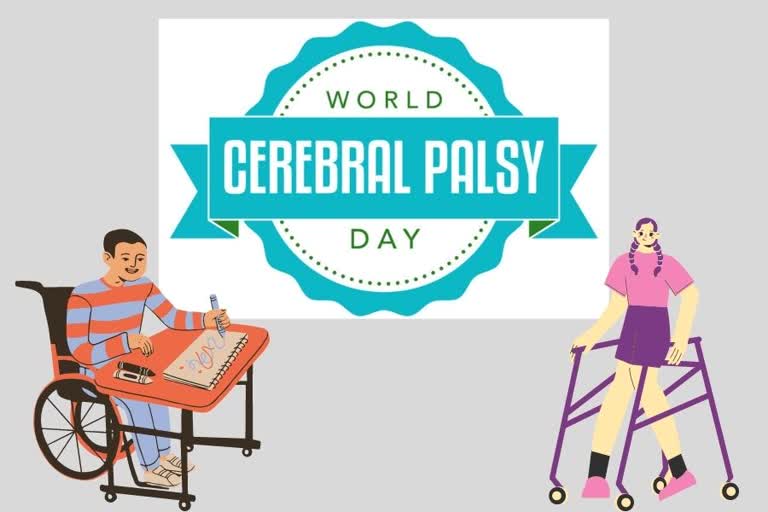World Cerebral Palsy Day is observed every year on 6th of October, in order to raise awareness about this neurological disorder as well as to help those suffering from it get equal human rights, make them self-sufficient, make medical treatments accessible for them and recognize their importance in the society.
Cerebral Palsy (CP) unfortunately has no curative treatment, but its symptoms can be managed through physiotherapy and medication right from childhood. The Centers for Disease Control and Prevention (CDC) states that CP is the most common motor disability in childhood. Recent population-based studies from around the world report prevalence estimates of CP ranging from 1 to nearly 4 per 1,000 live births or per 1,000 children.
What is Cerebral Palsy?
According to the CDC, Cerebral Palsy is a group of disorders that affect a person's ability to move and maintain balance and posture. CP is the most common motor disability in childhood. Cerebral means having to do with the brain. Palsy means weakness or problems with using the muscles. CP is caused by abnormal brain development or damage to the developing brain that affects a person’s ability to control his or her muscles.
The symptoms of CP vary from person to person. A person with severe CP might need to use special equipment to be able to walk, or might not be able to walk at all and might need lifelong care. A person with mild CP, on the other hand, might walk a little awkwardly, but might not need any special help. CP does not get worse over time, though the exact symptoms can change over a person’s lifetime.
Signs and Symptoms of CP
The most common symptoms of cerebral palsy begin to appear in the first 3 years of age in children. These vary from person to person and according to age. For example, breastfeeding children, under the age of one year, may begin to walk and talk late, crawl in an unusual manner, have difficulty in eating and swallowing food and liquids.
A baby born with CP may not be so active at the time of birth. They cry less, breathe slowly and are not very responsive. Also, the process of development in these kids is slow as compared to normal kids. Even after 6 months, these kids cannot control their neck movement. Hence, they are not able to sit in the initial stages, like other kids.
Apart from this, babies suffering from cerebral palsy also have problems breastfeeding. Saliva keeps dripping out of their mouth and their body gets stiff at times. Some symptoms in people with CP that can be seen to persist after 3 years, through adulthood are:
- Difficulty in seeing and hearing
- Difficulty in thinking and understanding
- Body ache at most times
- Stiffness in muscles and loss of balance in the body
- Tremors in the body (involuntary movement)
- Speed of doing any task is less and the body aches
- One side of the body is not very active
- No control over natural activities like urination
- Difficulty in walking, bending, or limping or walking with knees bent forward
- Excessive drooling or difficulty swallowing food
- Difficulty in grasping things with fingers.
Causes Of CP
Problems like cerebral palsy usually arise in children due to any kind of infection in the mother's womb during pregnancy, brain injury during or pregnancy or post-delivery due to any reason, or any other mental disorder.
Although in many cases the exact cause of this disease is not known, yet there are some common conditions that can be attributed to this disease. If the mother has had infections such as measles, also known as rubella, chickenpox, syphilis and severe jaundice during pregnancy, or if the baby's brain is not getting the right amount of oxygen due to an accident or physical problem, the baby becomes more likely to develop cerebral palsy.
Apart from this, the risk of cerebral palsy is also higher in babies born before 34 weeks. On the other hand, if more than 1 child is born at the same time, then the chances of this disease in children increases. Many times the risk of this disease increases if the child has had a disease like bacterial meningitis, severe viral infection or severe jaundice soon after birth.
How to Prevent It?
Some safety measures can be adopted to protect unborn babies and newborns from becoming victims of this disorder.
- Women must get vaccinated before pregnancy, against viruses like rubella or zika, which can affect fetal health.
- Blood pressure and diabetes must be under control.
- Avoid cigarettes, drugs and alcohol during pregnancy.
- Any possible Rh incompatibility between the other mother and the newborn needs to be recognized.
- Proper medical care during childbirth should be received.
- One must be careful with the baby to avoid any kind of head injury after birth.
In addition, under the India Newborn Action Plan (INAP), by the Ministry of Health and Family Welfare (MoHFW), India, in the year 2014, provision was made for prevention, early diagnosis and management of this neurological disorder. Rashtriya Bal Swasthya Karyakram (RBSK), a new initiative of the MoHFW aims to investigate four types of problems in children from birth to eighteen years. These problems include screening for any type of birth defect, disease, deficiency and developmental retardation including disability.
Also Read: Nutrition for Gifted Child



